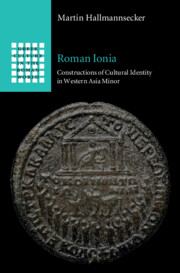Around 50 BCE a certain P. Vedius disembarked ship in Ephesos. He was Italian and a Roman citizen of free or freed status, and like many others, he came to Asia to make his fortune. He found success and stayed, setting down firm roots in its fertile soil. He married and had children and grandchildren, and he prospered. By the late first century CE,1 his descendants were among the wealthiest and most prominent citizens in Ephesos. Members of the family achieved the highest magistracies in the city, serving as grammateis and prytaneis, as priests and priestesses, and festival presidents. By the mid-second century, the Vedii became senators of Rome. However, this success did not cause them to cut ties with their adopted patris, Ephesos, where they had landed wealth, houses, business interests, and an affection for their new homeland. They continued to contribute their fortunes to Ephesos as euergetai (benefactors) in a series of building projects and in more ephemeral activities, such as sponsoring festivals. By the late second century this prolific family, having intermarried with another distinguished family of Ephesos, the Flavii, had Roman consuls in its ranks, and at least one house in one of Rome’s wealthiest districts. At the end of the Severan age they disappear from the historical record, like so many other individuals and families.2 Natural disasters and the political instability of the third century affected Ephesos deeply. An earthquake shook the city in 262. The following year, a band of Goths raided the city and burned the temple of Artemis to the ground. But even before this cataclysm, the epigraphic habit dropped off, a sign of political and economic malaise, and of social change. Civic authorities and individuals were no longer interested in raising honorific monuments to honor and commemorate benefactors, possibly because benefactors were no longer interested in demonstrating their philotimia (generosity, munificence) through office-holding, the sponsorship of festivals, and the financing of buildings. Thus by the mid-third century, we lose sight of the Vedii, although we know that some of their buildings and statues stood until the fifth century.


